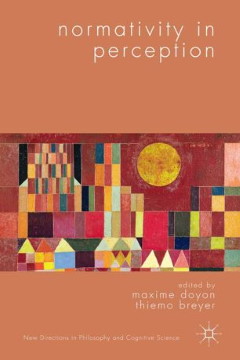This document is unfortunately not available for download at the moment.

Maxime Doyon, Thiemo Breyer (2015) Normativity in perception, Dordrecht, Springer.
Social visibility and perceptual normativity
Thiemo Breyer
pp. 140-157
Not implemented yet !
pp. 140-157
This document is unfortunately not available for download at the moment.